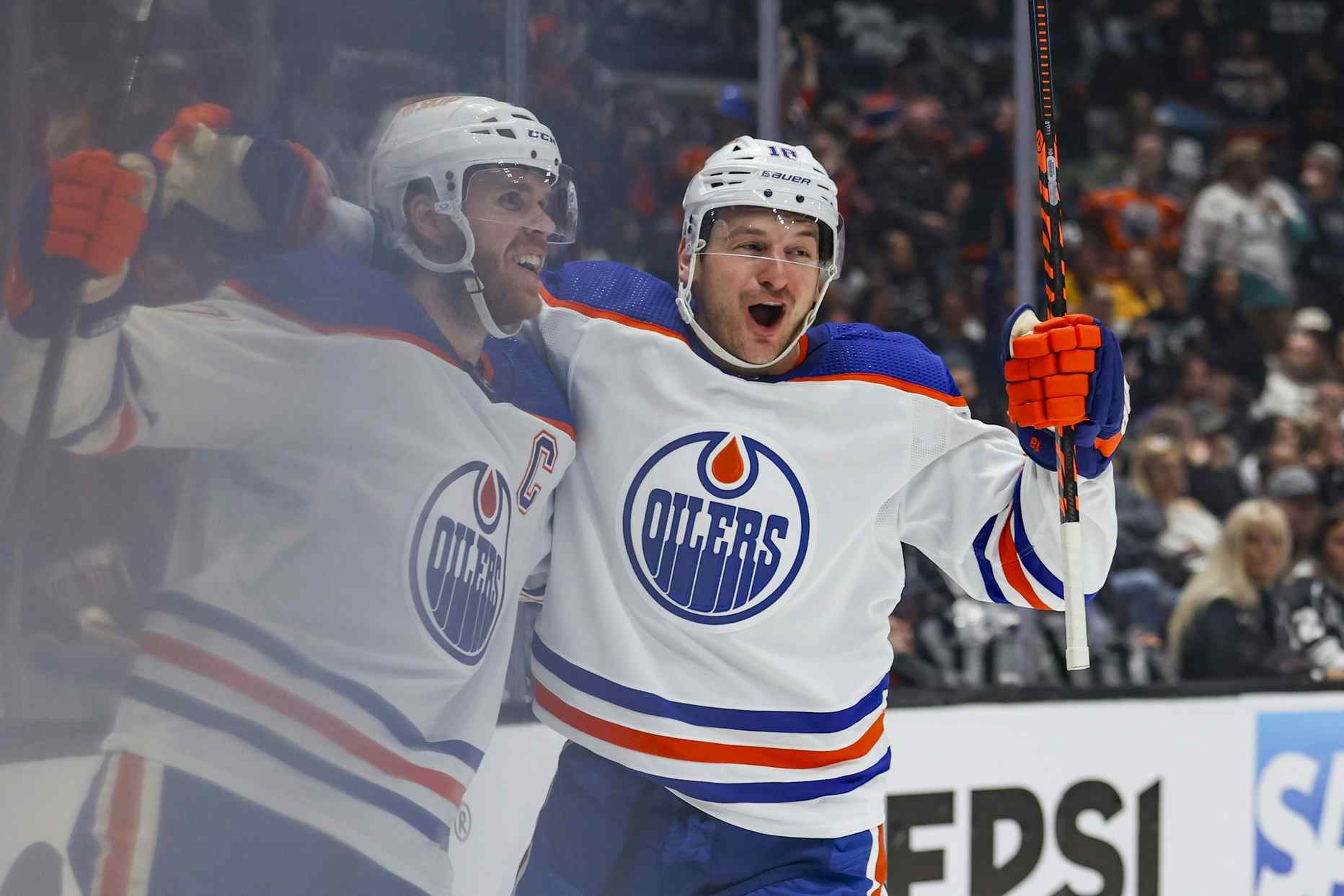Goalies: [Literally] moving targets
Of all the various prospects drafted and developed by the thirty NHL teams, I personally think that goaltenders are the most difficult to predict. So much depends on opportunity—getting development time and playing for a team with a spot for the taking.
Let’s look at a pair of goaltenders who were both rather unheralded in their draft year. Goaltender A was passed over twice before being selected as a 20-year old, while Goaltender B was never drafted at all. Here are their professional statistics, up until each got his first NHL opportunity:
Goaltender A (8th round pick as an over-ager, 5’9”, 162 lbs):
Year 1 – AHL – 12-17-6, 3.54 GAA, 0.887 SV%
Year 2 – AHL – 20-12-4, 2.27 GAA, 0.917 SV%
Year 3 – AHL – 17-14-5, 3.03 GAA, 0.897 SV%
Year 4 – IHL – 18-16-4, 3.16 GAA, 0.911 SV%
Year 2 – AHL – 20-12-4, 2.27 GAA, 0.917 SV%
Year 3 – AHL – 17-14-5, 3.03 GAA, 0.897 SV%
Year 4 – IHL – 18-16-4, 3.16 GAA, 0.911 SV%
Goaltender B (undrafted, 5’11, 200lbs):
Year 1 – AHL – 10-11-3, 3.03 GAA, 0.904 SV%
Year 2 – AHL – 18-18-4, 3.51 GAA, 0.894 SV%
Year 3 – AHL – 8-10-3, 4.01 GAA, 0.888 SV%
ECHL – 10-6-2, 2.89 GAA, 0.903 SV%
Year 4 – AHL – 23-17-7, 3.04 GAA, 0.903 SV%
Year 5 – AHL – 16-14-1, 2.99 GAA, 0.909 SV%
Year 2 – AHL – 18-18-4, 3.51 GAA, 0.894 SV%
Year 3 – AHL – 8-10-3, 4.01 GAA, 0.888 SV%
ECHL – 10-6-2, 2.89 GAA, 0.903 SV%
Year 4 – AHL – 23-17-7, 3.04 GAA, 0.903 SV%
Year 5 – AHL – 16-14-1, 2.99 GAA, 0.909 SV%
Personally, I don’t think there’s much to choose from between the two. Goalie A is wildly inconsistent, although he had a very nice second season as a professional. Goalie B looks like he has a lower ceiling, although he’s more consistent. It isn’t on this chart, but in the year that Goalie B got his first NHL action, he posted a .917 SV%, so I really don’t see a big difference between these two players, up to this juncture.
Goaltender A is Manny Legace. He got his first NHL action with the 1998–99 Los Angeles Kings, going 2-9-2 and posting a 0.911 SV% on a team where the other two goalies (Jamie Storr and Stephane Fiset) posted a 0.916 SV% and 0.915 SV%, respectively. The other two goalies were close to .500 winning percentage-wise. Legace posted nice numbers with the Manitoba Moose the following season, before emerging as a full-time backup with the Detroit Red Wings. He’s had a nice career and has been a legitimate starter for four seasons now.
Goaltender B is Martin Brochu. He had a couple of very high-end seasons with the Portland Pirates (.917 and .925 SV%) and got two games in with Washington in 1998–99. In 2001–02, the Vancouver Canucks started the season with a tandem of Dan Cloutier and Brochu, and things went sideways in a hurry. Burke had allowed the previous year’s only reliable goaltender, Bob Essensa to go to free agency (although he posted a career ending 0-5-0, .851 SV% season with Buffalo) and Brochu was the second-best option in the system. Brochu posted a 0-3-0 record along with a 4.17 GAA and a .856 SV%. Cloutier also struggled (he finished the year with a .901 SV%, but it was lots uglier early), and Brian Burke picked up Peter Skudra, who helped stabilize the tandem for the remainder of the season. Alex Auld also got into his first game, and looked calm and economical in a 4–2 victory over Dallas.
As for Brochu, he played one more game at the NHL level, with the Pittsburgh Penguins in 2003–04, after bouncing around the minor leagues and Europe. The last I can find of him is that he was playing in the LNAH in 2006–07.
The point to all of this (and there is one) is that it’s extremely difficult to look at the numbers and say that so-and-so is going to be an NHL-calibre goaltender. Jeff Deslauriers, who has had a ton of bad luck in his career (bouncing from minor league team to minor league team because the Oilers didn’t have a permanent farm team) has finally got some good (and by the numbers, undeserved) things happening for him because the Oilers seem committed to giving him some NHL time. The real beneficiary of this is Devan Dubnyk, another intriguing prospect who will get an increased workload down in Springfield. Outside of those two, Bryan Pitton and training camp invite Andrew Perugini are both turning pro after successful junior careers.
There really isn’t much to choose from between these four, or at least, not nearly as much as their draft pedigrees (or lack thereof) would seem to indicate. Dubnyk has the size, and his junior record in Kamloops would seem to indicate that he has more to offer as a pro than he has shown to date. Deslauriers looks like he may not have a terribly high ceiling, but given the turmoil in his key developmental years, he could be a late bloomer, while both Pitton and Perugini are coming off nice junior careers and either could surprise as a pro.
—Jonathan Willis is the force behind Copper and Blue, and a frequent OilersNation contributor.
Recent articles from Jonathan Willis






